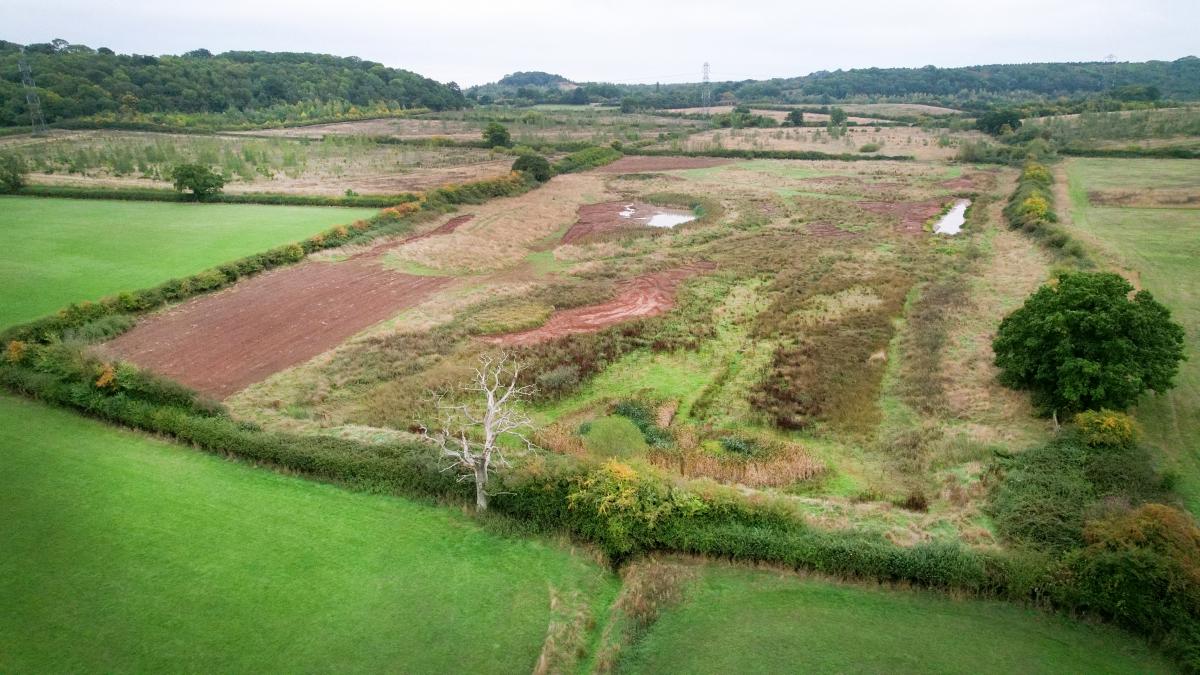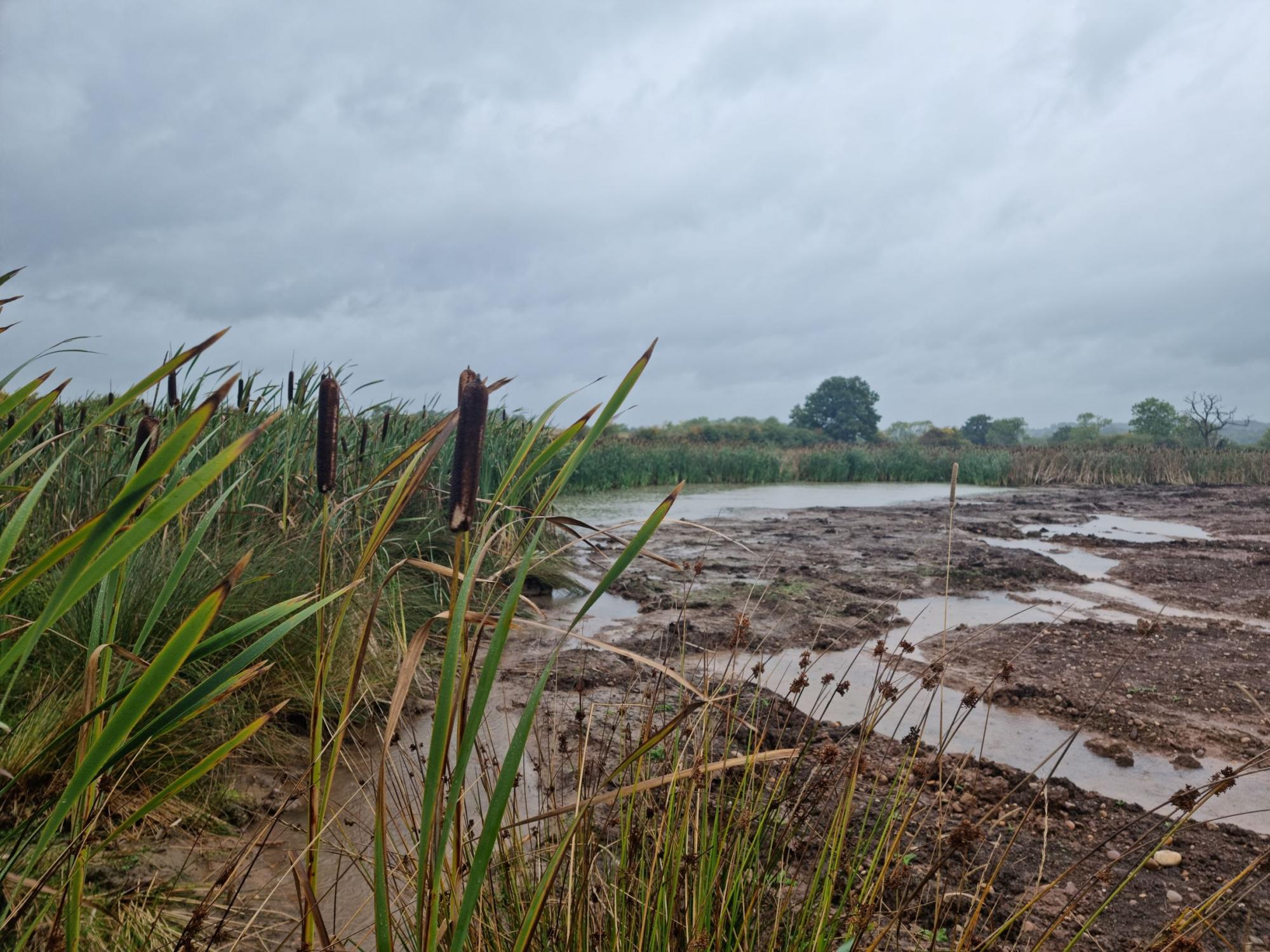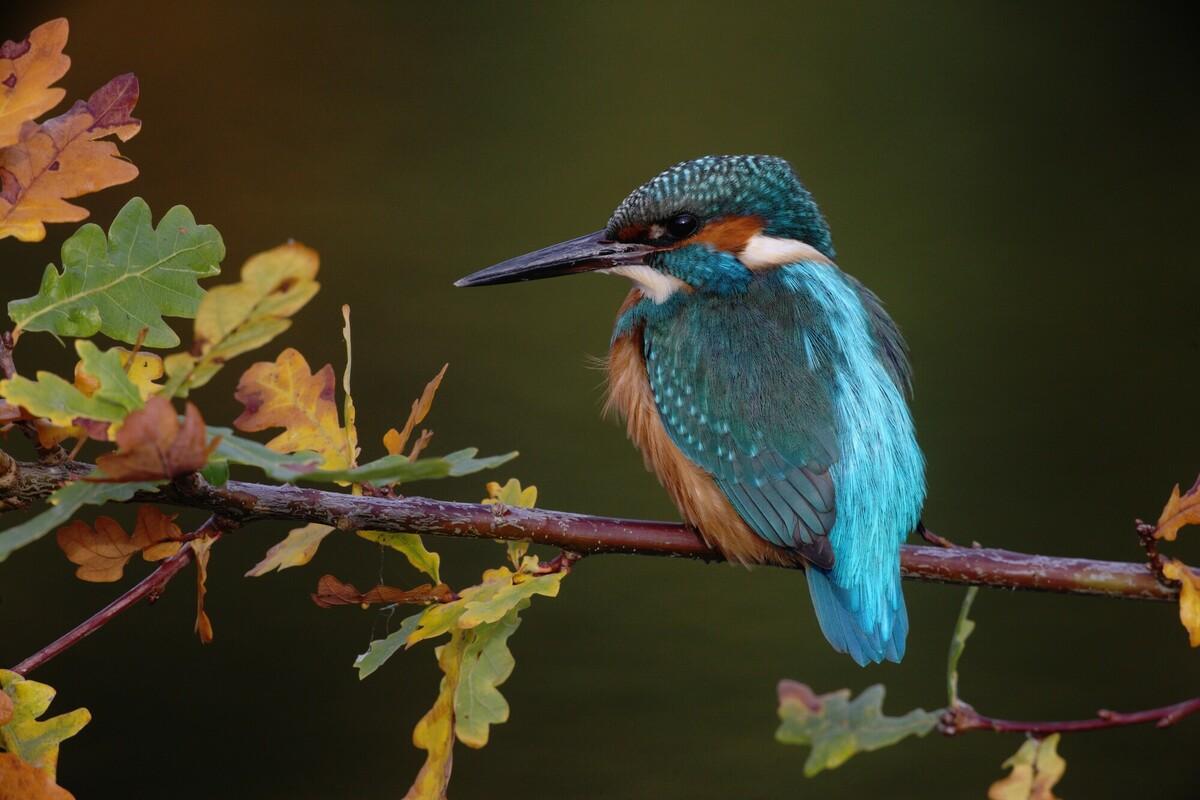
Wetlands in the Forest
The mosaic of habitats found within the Heart of England Forest increases the diversity of plants and animals, with wetlands providing some of the most biodiverse habitats in the Forest. Biodiversity Officer, Imogen Rutter, shares the latest wetlands news, as well as what a wetland is and why it is such an important habitat in the Forest.

What is a wetland?
A wetland habitat is an area of land within the Forest that has a body of water, such as a pond, but can also be an area of land that has a lot of ground water from a nearby river or lake causing a marsh. However, wetlands are not limited to these; swamps, peatlands, and much more can be categorised as wetlands.
Wetlands are covered by the UK Biodiversity Action Plan (BAP) which aims to protect and enhance habitats for endangered species.
Many wetlands are used as transition zones in the Forest, meaning that they are not totally underwater or totally dry. They are colonised by plants known as hydrophytes which can survive in very wet soil. Often these are types of grasses and moss that can support soil structure, such as riverbanks or even trees.

A home for wildlife
In the UK, wetlands make up 3% of land but support 10% of our biodiversity, so they are hugely important for our wildlife. Sadly the UK has lost over 90% of them in the last 100 years. The good news is that newly restored wetlands do not take long to recover and recolonise with both plant and animal life, and even within a year we can expect to see big changes in the types of species found in the pools across the Forest.

The Heart of England Forest wetlands update
Over the last couple of years, we have seen five wetland creation projects in the Heart of England Forest. Biodiversity Officer, Imogen, tells us more:
"The five wetland creation projects are located at various points within the Forest, at Oak Wood, Studley Thorns, Pitchell Meadow, Arrow Mill, and Netherstead. Overall, this has resulted in the creation of eight ponds, five scrapes, four leaky dams (three of which are connected to newly created backwater ponds), three re-landscaped ponds, a desilted pond, floodplain reconnection at two sites, and blocking of five land drains, to encourage development of wet grassland over time and reduce drainage from the land.
We are now working on grazing plans to ensure that management continues, as well as seeding and planting with wetland wildflower plug plants. This past year, we have carried out dragonfly and winter wetland bird surveys at both new and pre-existing wetland sites. In the future we aim to do more wetland plant and sward-based surveys to monitor species coming through.
The team has also been working on smaller ponds through the biodiversity volunteering programme, and it is amazing what has been achieved. A few weeks ago at Binton, we opened up and cleared encroaching bramble scrub from two pond areas that had become almost indistinguishable as ponds. Cutting back this scrub to reveal the full extent of a pond can then allow further works such as relandscaping or desilting in the future.
The early autumn is the best time of the year to do wetland creation work, as it is after the breeding bird season, to prevent disturbing ground nesting birds, but early enough in the season to avoid really wet ground conditions.
It is important to note that some sites also have great crested newts present, a European Protected Species, which require further restrictions and care. This means that often all wetland projects come with time challenges as they run at the same time, so we are always on the lookout for new volunteers to help us."

How you can get involved
If you want to get involved with creating wetlands and other important habitats to benefit biodiversity, why not pull on your wellies and come and join us as a volunteer.
You can also help us to provide habitats for wildlife to flourish by becoming a Friend of the Forest from as little at £5 per month - Become a Friend of the Forest today



